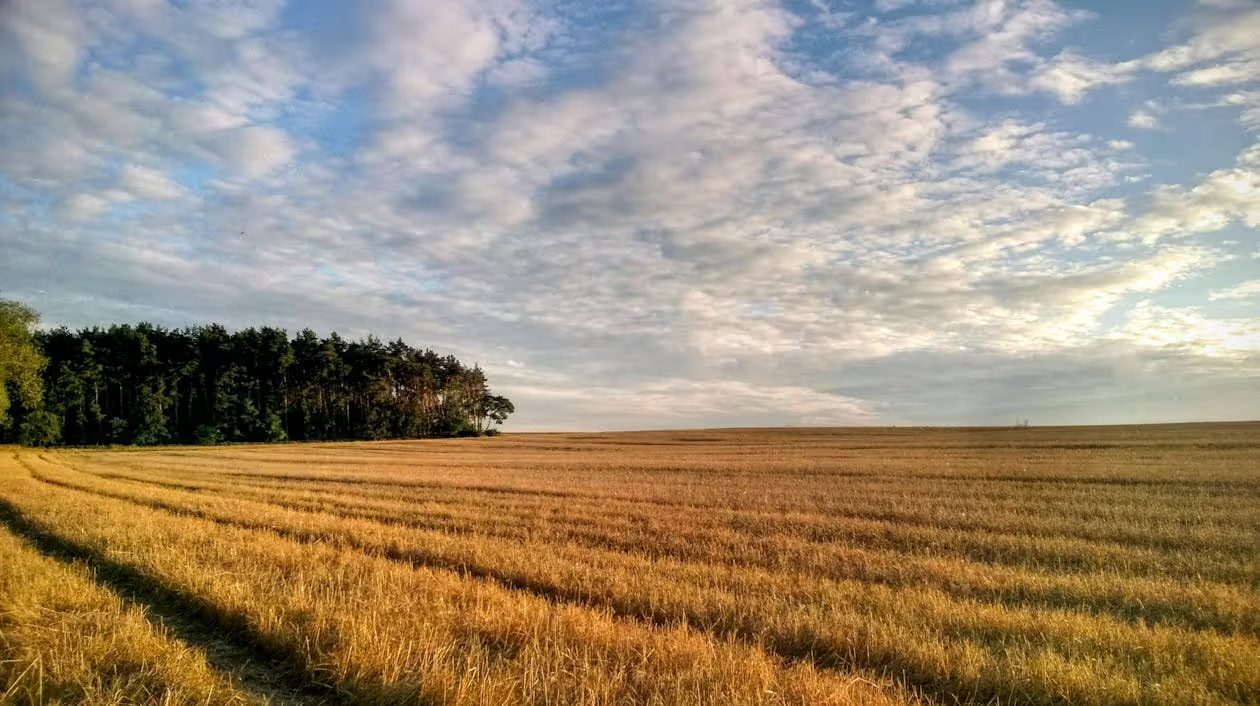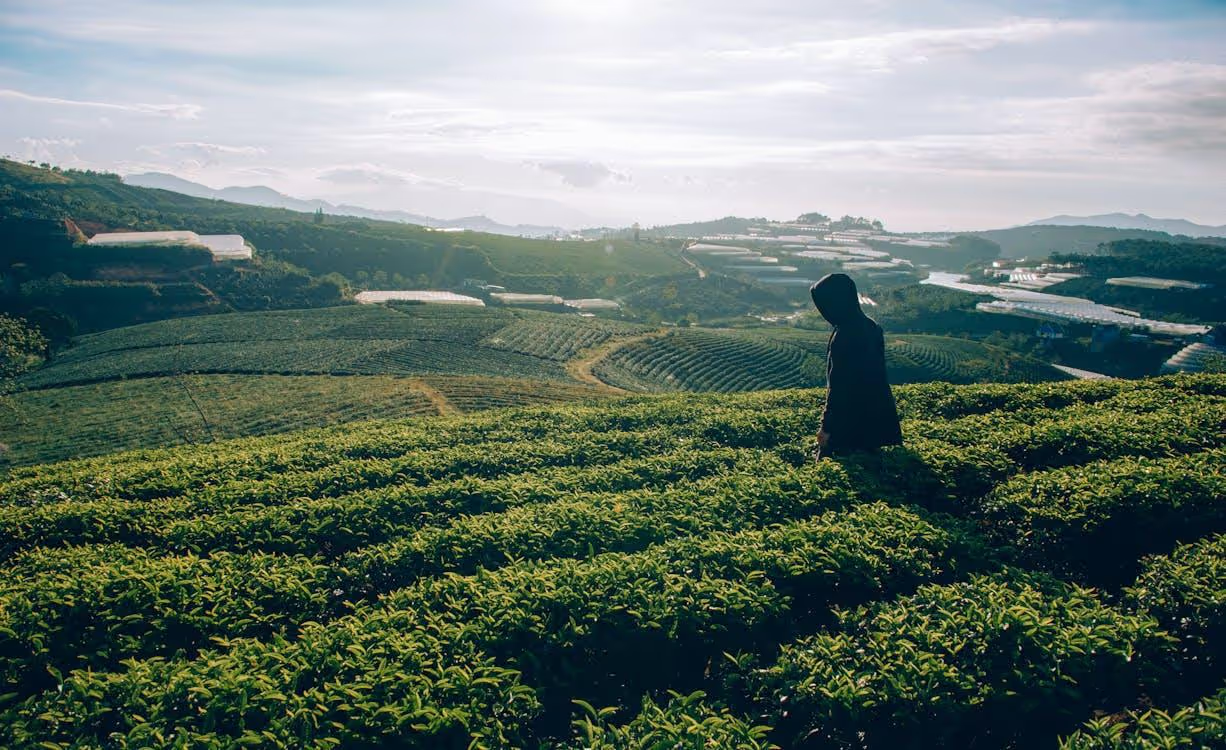The Best Counties to Buy Land in Iowa
Return to BlogGet cash offer for your land today!
Ready for your next adventure? Fill in the contact form and get your cash offer.

By
Bart Waldon
Blanketing over 36 million acres statewide, Iowa farmland fuels robust regional and national food production. With roughly 86% of land acreage actively cultivated and agriculture contributing $136.7 billion to state GDP annually, Iowa solidifies its status as America’s agricultural epicenter. Driven by recent years witnessing consecutive bumper harvests thanks to ideal rainfall, temperate seasonal shifts, and continually advancing seed genetics, Hawkeye State farmland valuations climbed over 7% through 2022. Experts predict appreciation will only accelerate over the decade ahead as heartland growing capacity expands.
Decatur County
Tucked into Iowa’s southern tier boasting the longest annual growing season statewide, Decatur positions prospective planters to reap the gradual benefits of mild weather patterns creeping northward – enabling planting of higher-value crops at volumes unheard of just five years back. With the county’s hilly terrain historically better suited for cattle grazing, buyers can still unearth gem cropland tracts throughout the landscape at reasonable per-acre prices below $7,500 – an increasing rarity elsewhere statewide. And local economic development leaders actively court agricultural processors to establish grain handling and product manufacturing facilities providing future channels for efficiently monetizing harvests the area increasingly supports.
Wayne County
Bordering top alluvial farmland hotspot Appanoose County yet with fewer value inflation concerns, Wayne offers investors an enviable opportunity securing Iowa’s renowned fertile soil at middling price points thanks to lower demand by mega farmers consolidating neighboring areas. Yet attentive landowners planting soybean and hay operations today in anticipation of ideal 2050 corn viability reap substantial rental incomes in the interim from cattle grazing lessees eager to feed herds on the nutritious surface vegetation thriving across Wayne’s gently rolling acres.
Story County
Shadowing central Iowa’s powerhouse Story County without commanding the five-figure per-acre premium seen closer to copious biofuel processing facilities, savvy buyers identify bargains in the rural tracts spanning Story’s southern reaches. There the small rivers meandering towards the South Skunk demonstrate proven irrigation infrastructure potential ready to support more intensive cultivation absent today given current norms prioritizing cattle production that could shift as operators eventually maximize cropping revenues on the highly fertile grounds.
Carroll County
With nearly 600,000 swine filling pens for processing across the county annually, corn and soy demands could scale exponentially should a full-scale consumer pork operation ever take root in Carroll like counterparts in neighboring counties. Plus, the region benefits from higher educational forces nearby with Iowa State drawing agronomy researchers to the area continually innovating new drought-resistant strains ideal for future planting – making land control today in Carroll a prudent bet benefiting tomorrow’s farming enterprises.
Winnebago County
The northernmost county in Iowa perhaps best illustrates global warming impacts dramatically expanding arability over recent years. Traditionally deemed inhospitable for robust harvests outside hardy grains like winter wheat, even longtime locals now concede the remarkable emergence of Winnebago's vineyards, apple orchards and produce farms as indicators of previously unimagined agricultural promise held by the once-frigid locale – evidenced by farmland valuation vaulting 110 percent since 2019. And commodious water access from both natural aquifers and Fox River feeds only bolsters the county’s credentials supporting lucrative agriculture pursuits employing innovative irrigation models that historically struggled gaining farmer acceptance locally but face fresh enthusiasm as operators continually adapt practices and crop mixes optimized to the area's elevated warmth.
While Iowa offers no shortage of fertile grounds promising profitable harvests in the hands of shrewd growers, particular counties demonstrate exceptional upside potential thanks to an ideal convergence of enriching soils, advantageous microclimates and agricultural infrastructure laying the foundation for future farming achievements. Carefully charting land investment entry points today allows properly capitalizing on the state’s burgeoning status as America’s breadbasket over the decades ahead. Reap the financial benefits tomorrow by securing Key Hawkeye State acreage positioned most favorably at the leading edge of climate-driven farming transformation.

Benefits of Buying Land in Iowa
Abundant Water Access Enables Irrigation Potential
Unlike western states battling persistent droughts, multiple rivers like the Cedar, Iowa and Skunk crisscross the state while natural aquifers offer copious groundwater volumes. This allows irrigation infrastructure installation for boosting output potential when rainfall proves sporadic. Such provisions grow increasingly essential as global warming brings more extreme weather like flash drought.
Topography Conducive to Mechanization Efficiency
Relatively flat or gently rolling countryside allows large machinery operation unimpeded for clearing fields, tilling soil beds, planting, fertilizer spraying and harvesting - optimizing per-acre yields and minimizing labor overheads. LEVEL topography facilitates efficient field work.
Soil Fertility Sustains High Production Volumes
Beyond moisture abundance, rich topsoil nutrient concentrations enable maintaining minimal fallow years even growing successive high yield crops annually. The land regenerates itself rapidly - a key advantage over regions demanding lengthy rotations leaving fields temporarily dormant to restore viability.
Four Distinct Growing Seasons
While northern states battle substantially colder winters, Iowa’s four distinct seasonal shifts support planting cool weather vegetation like winter wheat before rebooting spring/summer corn and soy crops on the same acres annually. This diversifies income generation.
Business Friendly Agricultural Policy Environment
Iowa legislatures historically aligned interests with the all-important farm lobby given the sector’s economic significance. This produces business-friendly regulatory policy pertaining to complementary processing facilities stimulating local agricultural job opportunities and revenue streams.
Ideal Proximity to Commodities Marketplaces
Abundant storage warehouses, regional trading exchanges like the Chicago Board of Trade, and convenient access to freight rail and barges facilitating cost efficient product distribution position Iowa farms to capitalize on harvest proceeds substantially. Growers avoid excessive transport fees cutting significantly into margins.

Final Thoughts
Given ideal growing conditions, continually advancing agronomic innovation, built-in irrigation safeguards, and market dynamics valuing Iowa’s prodigious harvest yields ever more lucratively, acquiring farmland prospects across the Hawkeye State serves both savvy investors and future-focused farmers. Even smaller hobby farm operations see profitability quickly with minimal barriers to entry thanks to prime turnkey land access. While America's breadbasket shifts with climate transformations, Iowa remains at the epicenter boasting inherent advantages hard to replicate elsewhere – making land control today a prudent bet benefiting those with vision to recognize undoubtedly bullish production upside in the decades ahead.
Frequently Asked Questions (FAQs)
What valuation factors make Iowa cropland so profitable?
Key drivers including climate shifts boosting yearly yields, global population growth escalating food demands, rising Asia protein consumption patterns, and U.S. biofuel policies valuing corn so highly couple with inherent Iowa advantages around logistics, infrastructure, and business climates benefiting agricultural producers disproportionately.
What are secondary revenue streams possible beyond just harvestable crops?
Alternate income opportunities tied to farmland ownership span hunting leases, pipeline and transmission tower easements, plus installation of solar/wind infrastructure generating energy royalties - all while keeping primary acreage sequences actively farmed.
What carries higher ROI potential - buying existing Iowa farmland or raw land for development?
While raw land allows constructing specialized farm structures fully customized to intended farming models from the ground up, established farmland with existing drainage systems and prior cultivation typically translates into faster revenue generation while avoiding hefty development costs and approval delays of raw land projects.
What equipment access options exist facilitating Iowa farmland operation?
Beyond simply purchasing requisite tractors, planters and combines outright, sharing agreements with neighboring farmers and short-term rentals from dealers when needing specialized seasonal implements provide affordable alternatives minimizing capital risks.
How quickly could beginner farmers expect generating positive Iowa farmland income flows?
The first two crop year cycles allow honing best practices tailored to new farms’ unique growing conditions. By the third full season, most Iowa farm owners see initial profits materialize after perfecting operating procedures leveraging local advantages.
What changes might impact future Iowa farmland values?
While crop prices and broader economic conditions sway annual valuations marginally, climate impacts enabling longer growing seasons and drought-resistant genetically modified seeds position Iowa agriculture for unprecedented output volumes in years ahead, supporting higher income projections that translate into elevated acreage valuations over the next decade. Begin acquisition efforts before values escalate exponentially.
